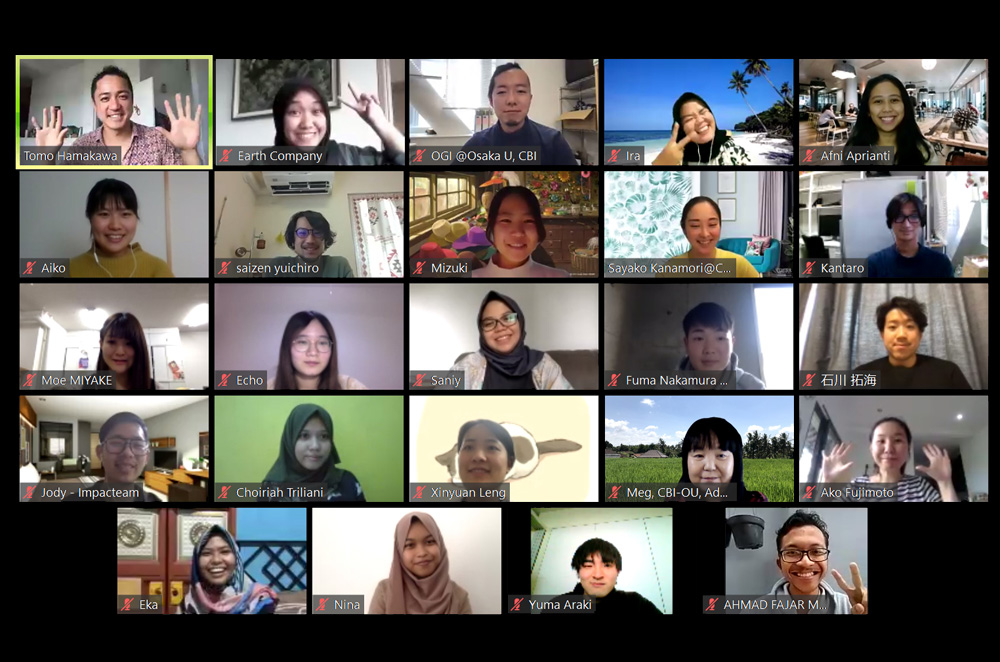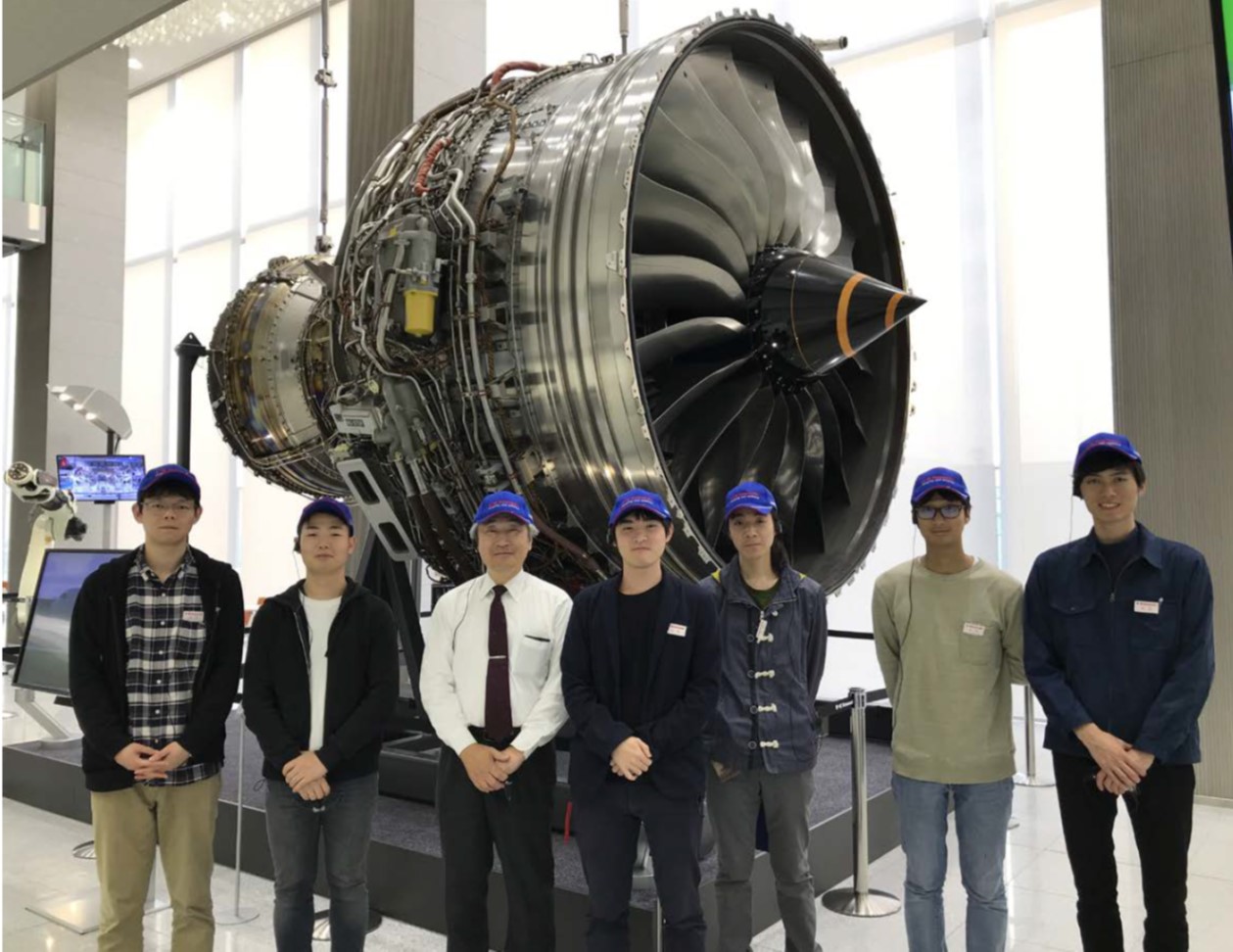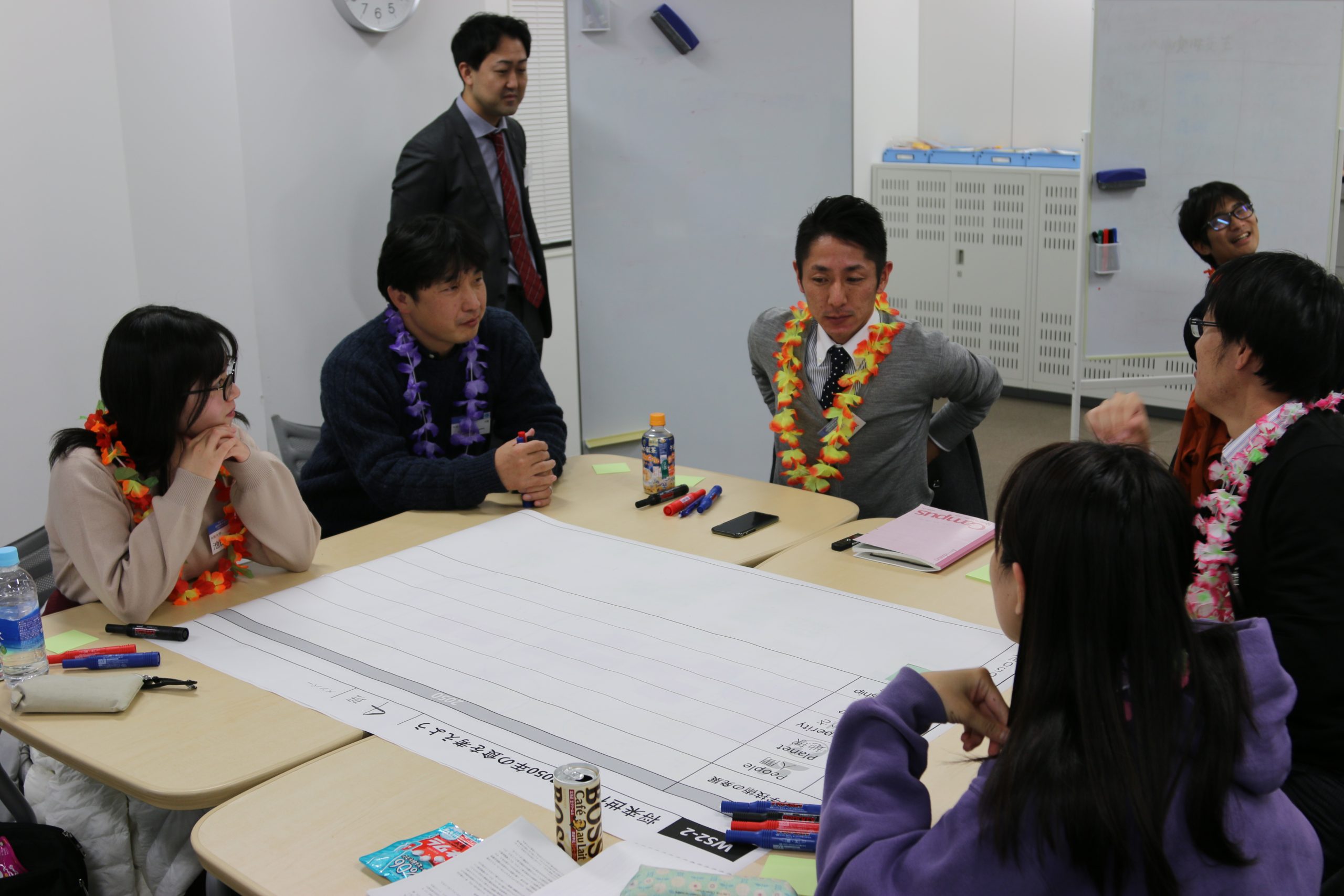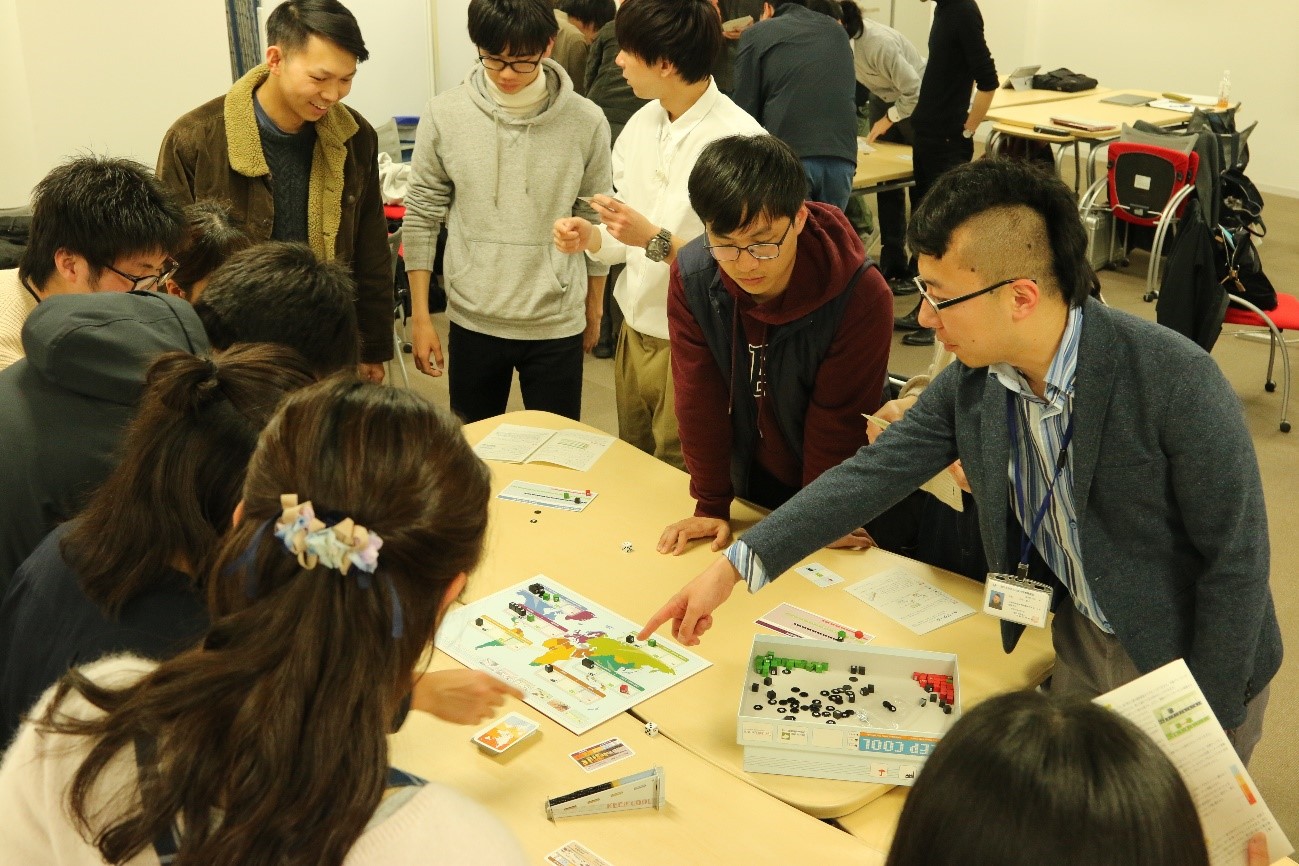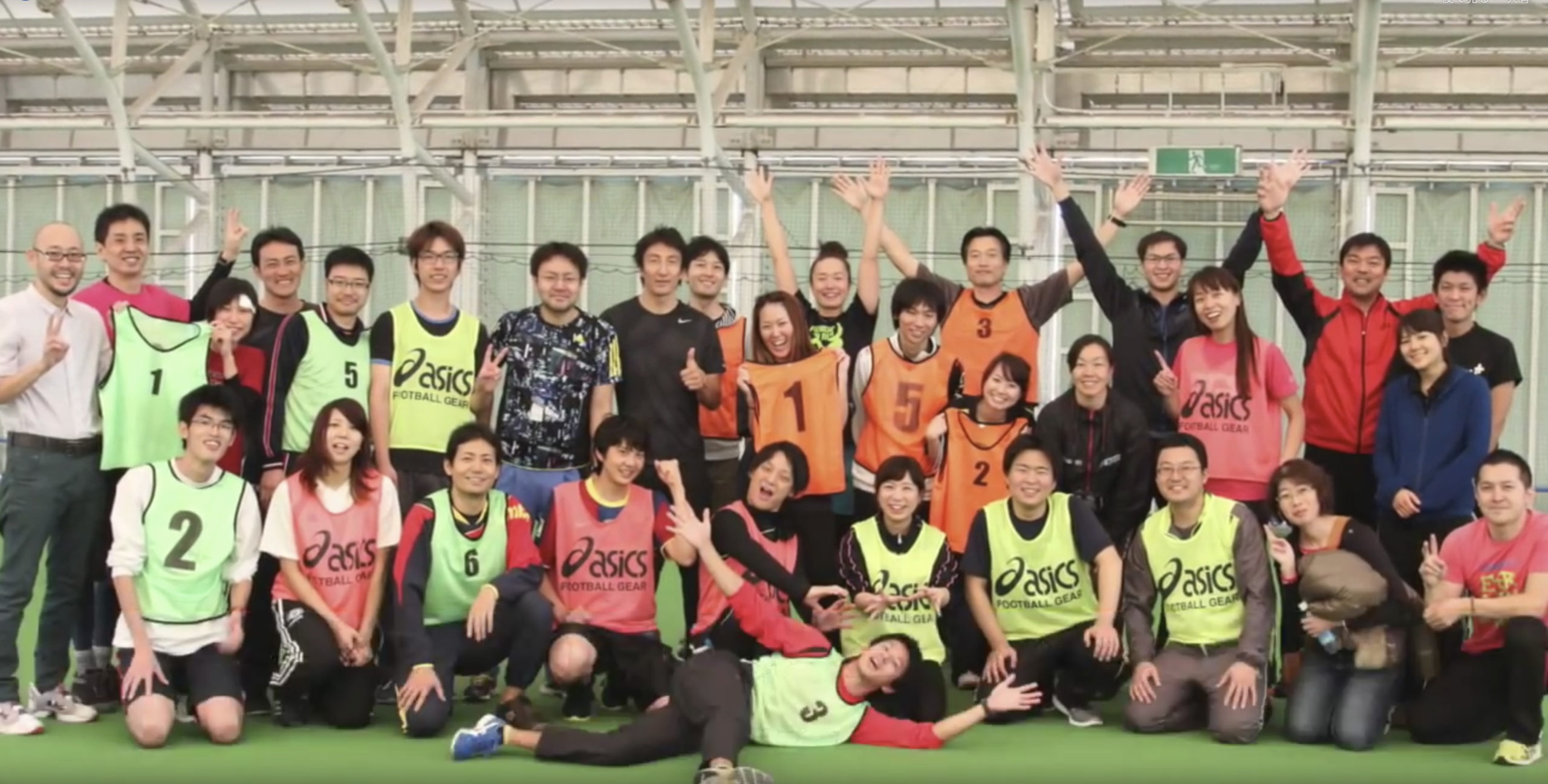授業レポート
海外フィールド・スタディ「FIELD REPORT ON TRIP TO PALAU」
2014/5/22

Text: Ivan Brenes
Palauans have a myth about Uab, a huge baby that grew into a giant that became too perilous for a village to handle. With a voracious appetite that at times included people, Uab was in the end set on fire by the villagers, and his charred and dying body collapsed into the ocean to form the string of islands that today makes up the nation of Palau. It is a grisly story, but it resonates; it seems that for three centuries Palauans have been dealing with a long line of giants, from colonial powers to geopolitical rivals. Today, as some people add the challenges of climate change to the list, one wonders how this tiny island nation of 20,000 (plus 10,000 foreign workers) will chart its course in the future.
To explore an answer to this question, Professor Takashi Mita of the Cross-Boundary Innovation (CBI) Program at Osaka University and a team of seven PhD graduate students made a nine-day field-study trip to Palau in March 2014. The purpose of the CBI Program is to promote innovative problem-solving skills among future leaders of different disciplines. Part of this includes gaining an international perspective that looks at problems of, for example, center and periphery. Palau was chosen as one of the destinations for this year, and I was able to accompany the team as an assistant and facilitator.
I had my duties, but otherwise there were few substantial differences between the students and me. I had never been to Palau and I had a passing familiarity with the country. Apart from its reputation as a world-class diving haven and the site of intense fighting in the Pacific War, I did not know much more. Just like the students, I was looking at everything with the eyes of a newcomer, and that made it easier to compare notes (literally and figuratively); we were thus all equally enriched by the experience.
The trip started with a three-day visit to Guam that added to the grounding the students and I had received from Professor Mita’s excellent introductory lectures. We attended lectures by local experts on the history and social problems of Micronesia, and the students met members of the Palauan community and learned about their impressive international network. Here, at stores, taro root patches, or the local Palauan bai (traditional meeting house), I think the students were able to discern something different about Palauans in the way they expressed pride in their culture and social cohesion. This was no small wonder because many of the social ills in the region – suicide, alcoholism, crime – reflect the damage on local cultures left by colonialism and modernization.

Any attachment to culture and identity was to be celebrated. I only had to look at the disorientation that was Guam, a place with no sense of place. Our pleasant hotel, with its Japanese guests of all ages, had a theme-park feel; the supermarkets and strip malls were nondescript and American; parts of the built environment were echoes of Guam’s Spanish heritage. You had to dig to find remnants of the local Chamorro culture. I did meet a few individuals who called themselves Chamorros but who knew little of their culture and language. The language was in fact the focus of an island-wide campaign that entreated local businesses to use greetings and the like. But could Hafa Adai become as ubiquitous as Aloha? It seemed too late.
Palau, then, is much of what Guam isn’t, at least for the moment. You feel the cultural vibrancy as soon as you arrive into the airport terminal, a modest structure that celebrates local architecture and natural history. This anchoring was gratifying, and we felt we could begin to focus on the field trip’s central question: What challenges does Palau face, and what are Palauans doing about them? First, however, any discussion of today’s challenges must involve a look at the past.

The good thing is that if you give yourself half a chance to reflect, Palau and its relics thrust history into your face. The capital, Koror, has quite a few physical reminders of Japan’s imperial rule (structures which some of us were later privileged to tour with one of the last Japanese survivors). However, few places are more poignant than the island of Peleliu, the site of one of the bloodiest battles of the Pacific War. We took a boat there on our first day. Palau had had its brief periods of Spanish and German colonial rule, but visiting Peleliu’s war ruins was to come upon a defining moment in Palau’s history, between the two pillars of Japanese and American dominance. Two things impress you about Peleliu. One is the visceral historical connection to Japan. Our students were fairly hushed as they wandered the remains of the military headquarters and stared at the tanks and zero fighters, all slowly succumbing to the forest and to rust. But it was particularly the more mundane — the Japanese toilets and bathtubs, the water canteens and helmets neatly arranged by the entrances to shelters — that brought a bit of the horror home. How recent it all felt.
The other thing that strikes you about Peleliu is the loveliness that belies its horrific battle. And now it seems as if, out of a historical discourse at Peleliu that essentially ignored them, nature has reemerged to give Palauans more voice. It is on the way to Peleliu from Koror that we passed the spectacular Rock Islands, today a UNESCO World Heritage Site. Imagine a tropical paradise and the islands are what you get: clear, blue-green waters teeming with marine life, white strips of beach squeezed by luxuriant forests. We all did some snorkeling and the students could get a taste of what makes Palau the place for divers.
Such beauty and bounty calls out to be managed wisely. On this first day the students and I were accompanied by two warm and knowledgeable Palauans. They explained to us some of the local environmental problems (damage to taro fields from brackish water, overfishing, invasive species) and environmental initiatives (commercial fishing bans, shark sanctuaries). Increasingly, the environmentalism of Palau’s president is putting the nation on the map, and this is where one hopes the foundations for a sustainable and independent future can be laid. After the war, Palau was a trust territory of the United States before gaining independence in 1994 and forming an agreement of free association with the US. American dominance and aid are paramount, and Asian powers vie for influence. Palau owes its excellent roads, a major bridge, and an impressive capitol building (in the middle of nowhere!) to aid from the US, Japan and Taiwan. The question is how effective tourism and diversification will be in better equipping Palau to balance its relations with major powers.
One encouraging point is that there is an effort to use and adapt traditional practices to protect different legacies. A tour of the Belau National Museum on our second full day in Palau gave us more needed historical background. The section on the Japanese occupation was quite moving, particularly the personal accounts of Palauans on what they saw, good and bad. But it was a lecture at the museum on Palauan society and culture that gave the students a useful handle on how Palauans are facing their issues. For example, we were introduced to the concept of bul, traditional edicts discussed by village councils and declared by chiefs. Originally for proscribing behaviors in the village, bul are now being used to declare fishing moratoriums and protect traditional intellectual rights. They clearly carry authority, but how much are traditional leaders being listened to?
On the third day we had an audience with the prominent chief and governor in the state of Melekeok, a good 40-minute drive from Koror. An affable and eloquent speaker, the chief was refreshingly honest about the challenges involved in balancing development and the environment, and he praised the students’ efforts to become problem-solving leaders. It was impossible to grasp the political dynamics here (the governor smiled and remained silent throughout our meeting), but we hoped people were listening to the chief. The meeting was a moving encounter, and it put a bit of weight on our students’ shoulders.
In fact, every once in while we met Palauans who would ask our students to contribute to solving Palau’s problems. Part of this was friendly cheer, I’m sure, but this raised the question that challenges development analysts everywhere: How much should outsiders help and how much should nationals take the initiative in solving problems? There is no easy answer as we had seen how outsiders with knowledge and experience can play beneficial roles. The day before we had toured the Koror State Recycling Center and had met its main consultant, Katsuo Fuji. The center’s innovative programs in composting and recycling beverage containers had done much to generate revenue and clean up the island. Mr. Fuji was clearly an inspiration for our students, but we were also left feeling that perhaps the recycling center should carry his name. One wondered what would happen to the facility without its main driving force.
In fact, the story of Japan can capture people’s imaginations for a variety of reasons. The nation’s miraculous economic rebirth after the war is well known, which leads people in different parts of the world to hold Japan up as a model of a country that has successfully modernized and retained its identity. The truth is much more nuanced, and our students were fairly clueless about how to explain it, but we could understand the sense of urgency. Ever since our stay in Guam, between their declarations of pride in their culture, Palauans had been confessing their uneasiness with what they see as cultural decay.
It was at the Bai Melekeong, the meeting house a short walk from our lunch with the chief, where we saw a bit of the cultural heritage at risk. The bai is an outstanding building, gloriously painted with cultural symbols and, inside, rows of pictures depicting traditional legends. The female figure painted high above the entrance nonchalantly spread her legs, unlike her more modest, cross-legged counterpart at the bai in Guam. With its library of stories and the etiquette involved in entering it, the bai offered invaluable instruction in cultural values to the younger generations. Our Palauan friends (yes, by now our excellent hosts felt like friends) explained how the building is used for such purposes. We learned much as by now the students were more confident when asking questions. How was this stone trail made? What did the fruit bat signify? How much were ordinary people interested in their culture?

It was now time to meet ordinary people. After our visit to the bai, we arrived outside the state building in the northern state of Ngarchelong for the heart of our field trip. To get more immersed in the local culture, our students would spend a total of four days with local families. Their stay would be more rewarding than students could imagine as we waited for the families to gather that first day. At that time, the students were clearly nervous as they waited to be introduced to their families. However, their tension started to melt away as host mothers (in line with the matrilineal nature of the society) greeted the students with hugs and flower necklaces, and then led the students to the cars waiting for them.
Far from the traffic and noise of Koror, the northern part of Palau is tranquil and safe. The houses are humble but clean, brightly colored, and well kept. Doors are left unlocked and children play on the roads. We could all finally slow down and listen. And what did the students learn? They learned the importance of family clans in Palau as most students were essentially staying with one extended family. No kindergarten is needed as relatives look after each other’s kids. The students learned that this is still a part of the world where children and young people respect their parents and elders. They learned that no matter how modest the local school was, the young pupils were bright and eager to learn about the world (our students were given a marvelous reception when they made a presentation on Japan). And they learned lovely dances and chants that they put on full display in a delicious farewell banquet that touched us all.

The students also learned that, despite nutritious traditional foods, obesity and cardiovascular disease were problems due to eating habits copied from the US and a lack of exercise from watching too much TV and relying too much on cars (some students were shocked at how few vegetables there were in the local diet). They learned that while the Ministry of Health attempts to educate people about the negative effects of chewing the addictive betel nuts, people chew away anyway. They learned that some locals harbored views that disproportionately blamed many of the world’s problems on the developed world. In other words, CBI students learned what they would have learned spending time with families in other parts of the world: strengths and flaws. It was hard to imagine, though, a prettier or more hospitable setting to experience all this.
By the end of the trip students were clearly eager to step out more on their own. Compared to when they met with the chief, students asked more concrete and animated questions in their friendly meeting with the President of the Republic, Tommy Remengesau, at the Capitol Building in Melekeok. Also on that last day of the trip, CBI students made a presentation and organized activities with students at the Palau Community College to talk about their experiences. All on their own. It was all ending too soon, but it was splendid to see the insights the students had gained, about the local society, politics, economics, and healthcare; it was doubly splendid to see those students interested in immigrant communities seek out and talk to Filipinos and Chinese, or to see our specialist in waste water management walk into the local treatment plant and chat with those in charge. I’m sure we all found our private moments of discovery, some of which we will place into our academic field kits and take home. As a specialist in minority languages, I was heartened. The Palauan language was being used by children and young people, and any linguist will tell you that this is the most important thing for a language’s vitality. Unlike Chamorro, it didn’t need a campaign to promote its use, at least for now. Older people bemoan how young people are using the language, but that is another issue.

My most intimate moment with Palau tells me that rough waters lie ahead. Professor Mita and I had gone to meet the head of a local newspaper to discuss an article about the field trip. After introductory talk about the CBI program and anecdotes of his trade missions abroad, the man’s mood changed as he shifted to the topic of preserving Palauan culture and language. “I cannot even talk to my granddaughter in our own language!” he confessed. His case was special; his son had married a non-Palauan and the family had recently moved to Palau from abroad. But we had heard his lament before, and the scene said it all. As he spoke with downcast eyes and sunk further into his chair, his young granddaughter was at the other end of the office, attention focused on her gaming device, feet on a desk. This was a man with gravitas, a chief and business leader, yet he looked defeated as his granddaughter contently played on. It won’t be easy, I thought.
If the people can channel their pride and cultural implements into a collective will that won’t get diluted as Palau negotiates its giants, then I feel the nation can keep a good share of its identity and natural capital. Of course, this impressionistic report presents no final word on Palau. Anything of real substance must involve scholarship. But thanks to this unforgettable experience, the students and I learned how to learn about a country and its people, and we will be able to better evaluate whatever developments come Palau’s way. We will be watching and wishing the nation well, and maybe our paths will cross again.



